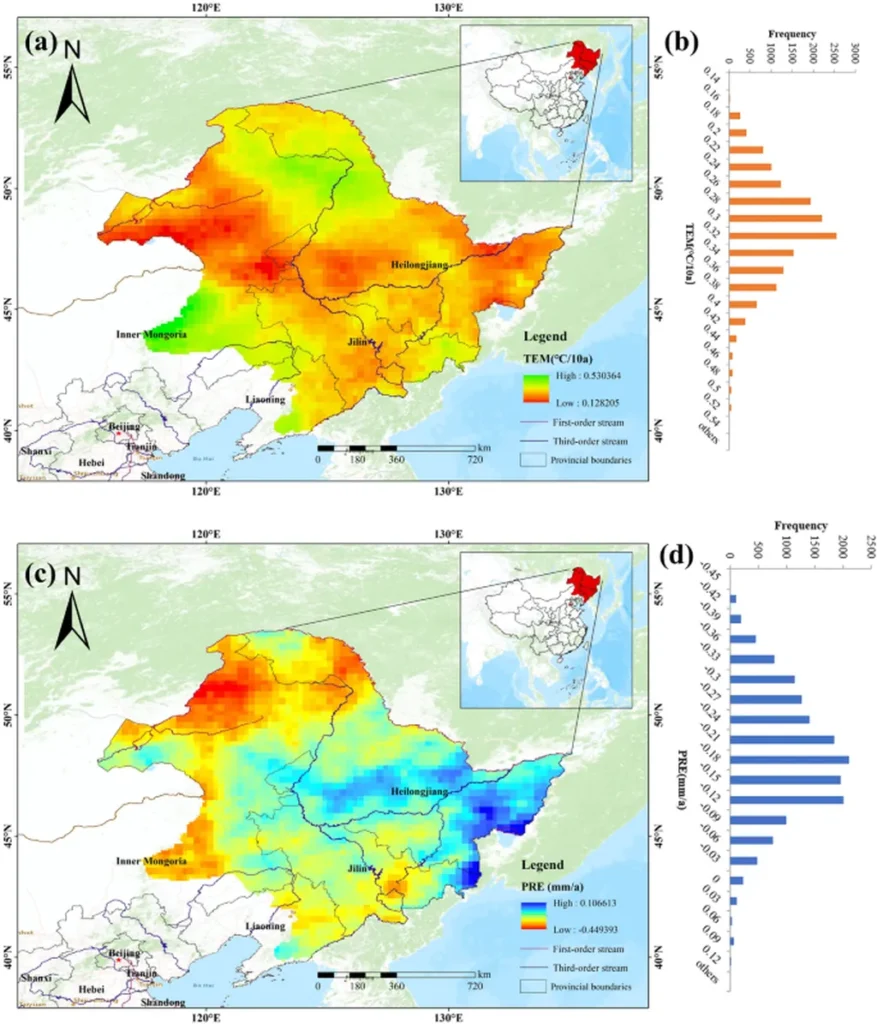In the vast, frost-kissed expanses of Northeast China, a silent transformation has been underway, one that could reshape the region’s agricultural and energy landscapes. A groundbreaking study, published in the *Frontiers in Soil Science* (translated from the original Chinese title), has unveiled a significant decline in the maximum freezing depth of seasonally frozen ground (SFG) over the past five decades. Led by Shuo Wang, the research employs machine learning to predict and analyze these changes, offering crucial insights for climate adaptation strategies.
The study, which incorporates data from ground meteorological monitoring stations and remote sensing reanalysis, reveals a consistent decrease in the maximum freezing depth (MFD) of SFG in Northeast China. “The average rate of change is -8.54 cm per decade,” explains Wang, highlighting a trend that has profound implications for various sectors. The average maximum freezing depths (AMFDs) have steadily declined from 136.71 cm in the 1970s to 104.58 cm in the current decade.
This shift is not merely a geological curiosity; it has tangible impacts on agriculture, construction, and transportation. For the energy sector, understanding these changes is paramount. “Changes in freezing depth directly affect many sectors such as agriculture, construction, and transportation,” Wang notes, emphasizing the need for accurate predictions to develop effective climate adaptation strategies.
The study’s findings indicate that areas with freezing depths of less than 160 cm have expanded, while regions with depths exceeding 160 cm have contracted. This trend underscores the urgent need for adaptive strategies in energy infrastructure, particularly in the construction and maintenance of pipelines and power lines. As the ground freezes less deeply, the risk of frost heave and thaw settlement increases, posing challenges for infrastructure stability.
Moreover, the agricultural sector, a cornerstone of Northeast China’s economy, is also affected. Shallow freezing depths can lead to increased soil moisture and altered soil chemistry, impacting crop yields and farm management practices. Farmers and agronomists must adapt to these changes to maintain productivity and sustainability.
The research also highlights the potential of machine learning models (MLM) in predicting environmental changes. “Considering the lack of data regarding the MFD of SFG in Northeast China for the past 50 years, the MLM provided an effective method for predicting changes in MFD using meteorological data and remote sensing reanalysis data,” Wang explains. This innovative approach not only fills critical data gaps but also offers a robust tool for future environmental monitoring and management.
As climate change continues to reshape our planet, studies like Wang’s are invaluable. They provide a scientific basis for environmental management and ecological protection, guiding policymakers and industry leaders in making informed decisions. The energy sector, in particular, stands to benefit from these insights, ensuring that infrastructure and operations are resilient in the face of a changing climate.
In the end, this research is a testament to the power of technology and data in understanding and adapting to environmental changes. As we move forward, the integration of machine learning and remote sensing data will undoubtedly play a pivotal role in shaping a sustainable future for Northeast China and beyond.

